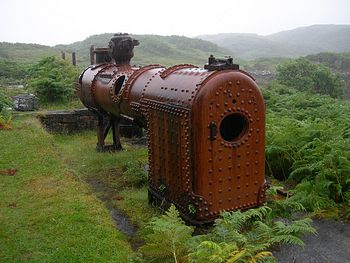Last week we spent some time on the island of Soay, which lies just to the south of Skye.
In the picture below, the Cuillins of Skye can be seen in the background.

In order to get to Soay, we went to Skye and our friends came in their own boat to fetch us as there is no regular ferry service. It is pretty isolated as the harbour is the other side of the island from where people live. It is only a short walk across, but not much good for carrying luggage or heavy goods so they have to walk across, which takes about half an hour, and bring the boat round, which takes about an hour. There is no jetty, so each stage has to be done by transferring to inflatables and landing on the beach. The crossing to Skye takes about an hour, and once there it is just a single-track road for about 12 miles. From September to March they expect to be more or less cut off, so they need to stock up supplies for 6 months just in case. There is no road or transport on the island and only 3 people living there plus a few houses used more or less as holiday cottages. Post comes about once a week, and once a month in winter.
There are many lochs on the island, and much of the rest is bog and heather moor.
 Despite the island being low-lying, the coastline is quite spectacular.
Despite the island being low-lying, the coastline is quite spectacular.
 The population used to be much larger. The school is now boarded up as there are no children.
The population used to be much larger. The school is now boarded up as there are no children.
 The telephone box is no longer in use, except for storage.
The telephone box is no longer in use, except for storage.

 A Scotch Argus from Soay.
A Scotch Argus from Soay. Another recent butterfly sighting, this time on the coast near home, was a Small Copper.
Another recent butterfly sighting, this time on the coast near home, was a Small Copper.
 A Scotch Argus from Soay.
A Scotch Argus from Soay. Another recent butterfly sighting, this time on the coast near home, was a Small Copper.
Another recent butterfly sighting, this time on the coast near home, was a Small Copper.


















